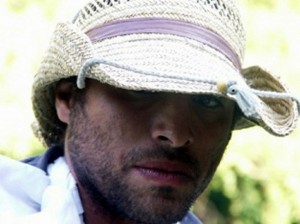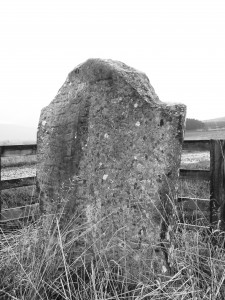
KING Arthur could be buried in the Scottish Borders, according to an amateur historian.
Literary archaeologist Damian Bullen, 35, says the famous 5th century king’s grave stone is in Scotland, not Glastonbury as tradition holds, and that he can prove it.
According to the Edinburgh-based history-fan, the Yarrow Stone, discovered by farmers near the Borders town of Selkirk 400 years ago, marks the mythical king’s last place of rest.
He claims a Latin inscription on the stone holds the key to the identity of those buried below it.
And he believes a nearby lake could hold the king’s infamous weapon, Excalibur.
Mr Bullen believes monks at Glastonbury spread the rumour King Arthur was buried in Somerset to save their abbey from financial ruin.
Mr Bullen said: “When we strip away the mediaeval romancing of our legendary king, we are left with genuine nuggets of historicity. One of them is the stone at Yarrow which I am convinced is his grave marker.”
Legend tells that Arthur was fatally wounded in a battle against his illegitimate son Mordred during the Battle of Camlann.
Mr Bullen says Camlann means “crooked glen”, which he says is “a perfect match” for the river bends in Yarrow Valley.
Significance
He claims the stone’s Latin inscription also hides a deeper meaning.
Mr Bullen said: “The accepted translation reads ‘This is an everlasting memorial. In this place lie the most famous princes Nudus and Dumnogenus. In this tomb lie the two sons of Liberalis.’

“Academic consensus states that the site was a burial ground for two Christian princes of the fifth to sixth centuries AD- but which two?
“At first glance it seems that Prince Nudus and Prince Dumnogenus were the sons of King Liberalis, but there is more to these names than meets the eye.”
Mr Bullen claims the words “liberalis” and “nudus” would have been a poetic way of saying that they were noble princes.
And ‘Nudus, he says, implies loss of all one’s material possessions.
He believes this word was used as a deterrent to grave-robbers.
He further claims: “Moving on to the second prince, Dumnogenus, the whole key to the Yarrow Stone and its significance to British history is revealed.
“The word is actually made up of two components, Dumno and Genus.
“Genus- descent, birth, origin- with implication of high or noble descent- nationality, race, nation.
“The genus element means ‘born of’, as in our modern word ‘genes’.
“This makes the two princes ‘born of Dumno’. This has to be the Dumnonii, a tribe of ancient Britons, whose land encompassed Cornwall, Devon, Somerset and Dorset.
Relics
“This knowledge renders the inscription as, ‘Here lie two famous and very noble princes of Dumnonia, buried without possessions’. Of all the princes of antiquity who have heralded from this region, there is one who stands head and shoulders above the rest- King Arthur.

“That he died with a family member- Mordred- fits the inscription on the Yarrow Stone completely,” he added.
Mr Bullen believes that the monks of Glastonbury made false claims that Arthur was buried there to raise money for a burnt monastery.
“When we look deeper into the initial discovery [of Arthur’s coffin], we learn that the abbey was, at that time, in deep financial trouble.
“A few years before the discovery, in1184, the monastic buildings and church of Glastonbury had been burnt to the ground.
“Money was needed, and with the relics of saints being big business at the time, these wily monks ‘found’ the bones of Saint Patrick.
“Widespread belief in an Irish burial site soon put paid to that particular claim, and the bones of Saint Dunstan ‘discovered’, not long after were dismissed as swiftly.
By 1189, King Richard I, was pressing the church for financial assistance for his crusade and the monks were getting desperate.
Mr Bullen said it was no coincidence that the bones of King Arthur were unearthed the next year.
The history enthusiast also says that the “dead lake” near Yarrow bridge has been known locally as the final resting place of warriors killed in battle.
“It could well be the lake in which Arthur ordered his knight Bedivere to throw Excalibur into as he lay dying.”
Mr Bullen added: “It seems Arthur was buried near Selkirk. I’m convinced of this and until we find another site in a crooked glen, where two princes of Devon and Cornwall are buried side by side, and surrounded by the bodies of many warriors, I shall remain so.”

